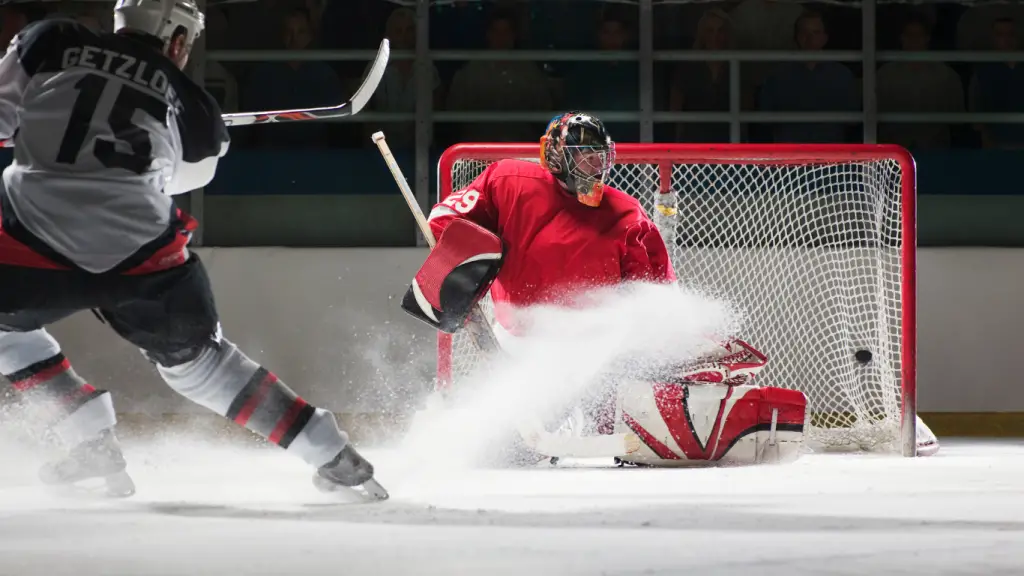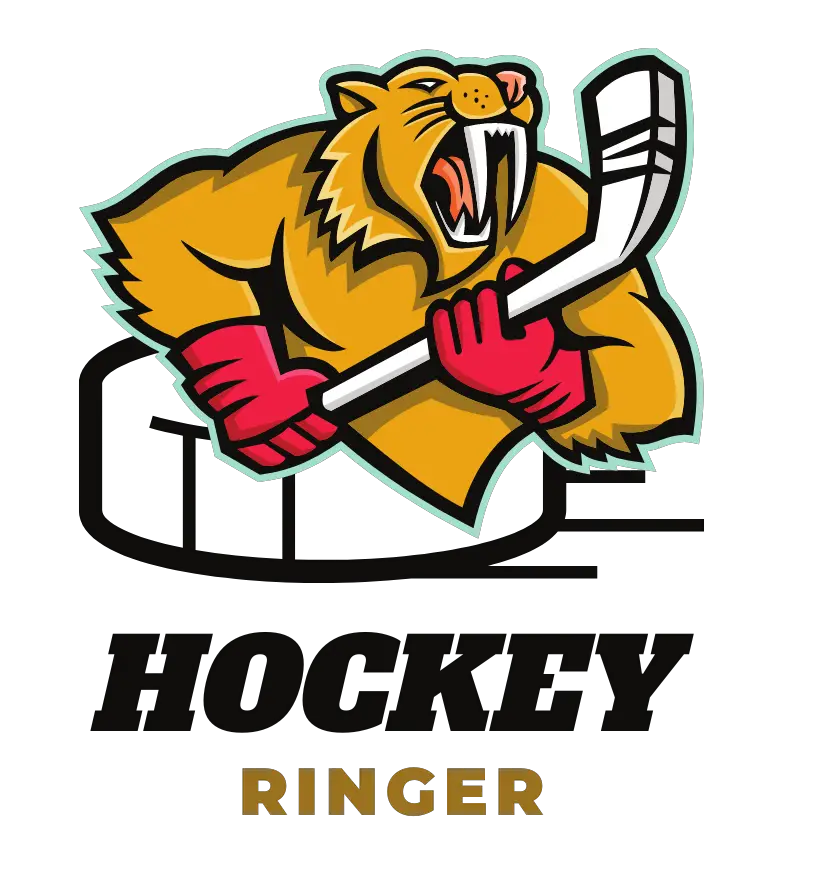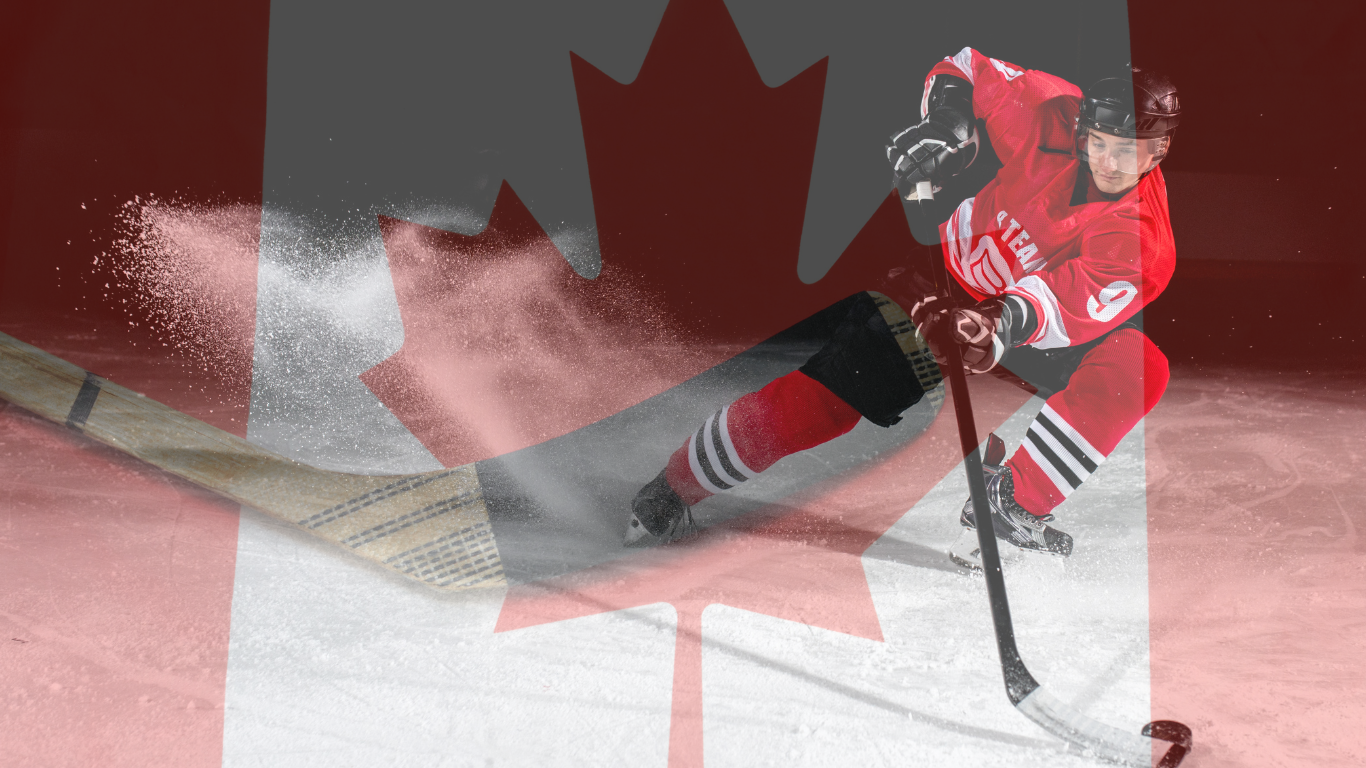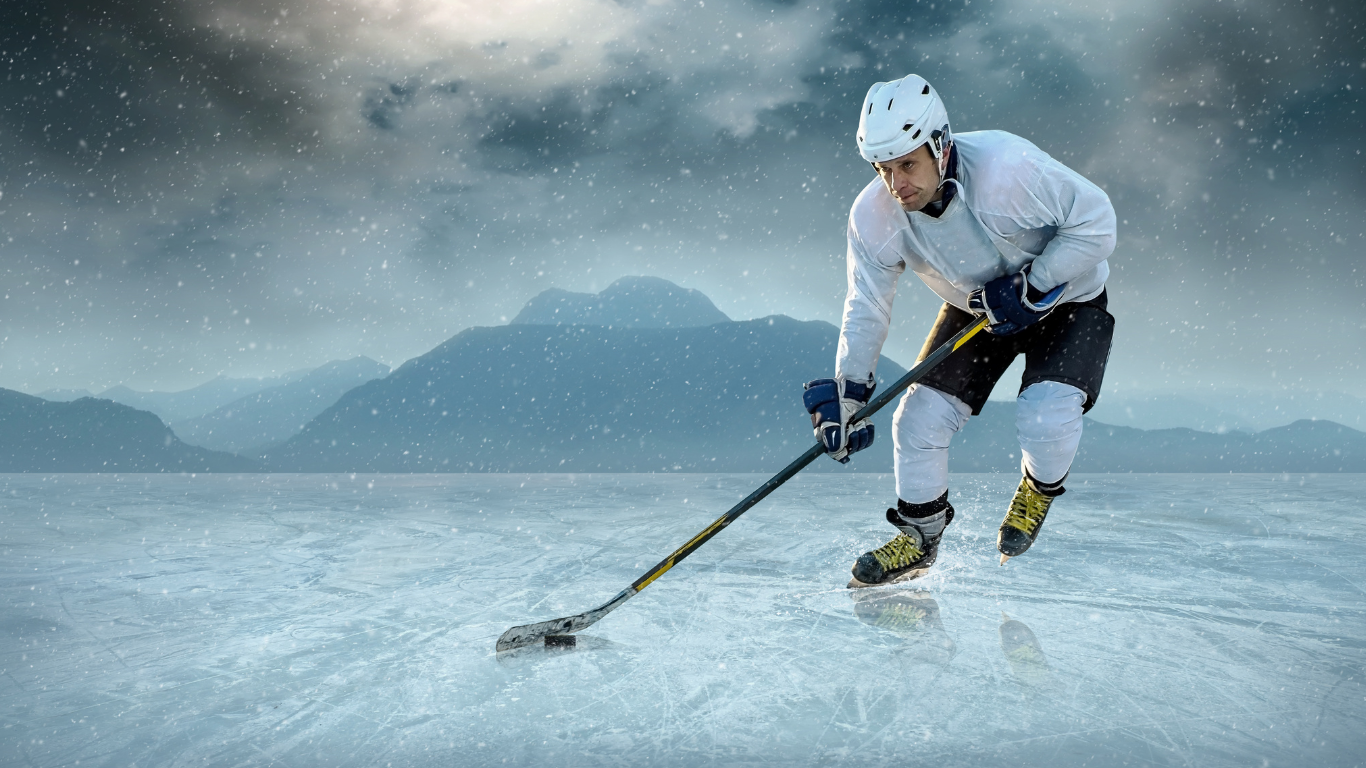To score in ice hockey, the objective is to get the puck entirely past the opposing team’s goalie and across the goal line, between the two goal posts and below the goal crossbar. A goal is credited to the player on the scoring team who last touched the puck before it entered the net.
However, if the opposing team inadvertently puts the puck into their own net, the last player from the scoring team to touch the puck is credited with the goal. Notably, player statistics in hockey encompass both goals and assists, with each contributing to a player’s point tally, though the game’s score is determined solely by the number of goals each team nets.
To optimize your scoring potential in ice hockey, adopt strategies like positioning yourself near the net, which can either screen the goalie or set you up for a tap-in. Exploiting soft spots, or vulnerable areas where the defense is weaker, can open up valuable shooting opportunities.
Another effective strategy is to ‘take back ice,’ or move away from defenders, creating more space for shooting or passing. Remember the various types of goals, such as Even-Strength, Power Play, Short-Handed, Empty Net, Own Goal, and Penalty Shot, as understanding these scenarios can inform your strategy during the game.
How to Score in Ice Hockey?

Scoring a Goal
Scoring a goal is the ultimate objective in ice hockey. It occurs when a player shoots the puck past the opposing team’s goaltender and into the net. The goal is awarded to the player who last touched the puck before it crossed the goal line. A goal is considered legal if it was not scored using hands or any other body part.
Own Goal
An own goal is when a player accidentally puts the puck into their own net. The goal is credited to the opposing team and not to any specific player.
Hat Trick
A hat trick is when a player scores three goals in a single game. It is a significant achievement and is often celebrated by fans throwing hats onto the ice.
Overtime Scoring
In the event of a tie game at the end of regulation time, overtime is played. Overtime is sudden death, meaning the first team to score wins the game.
Power-Play Goal
A power-play goal is when a team scores a goal while they have a numerical advantage due to an opposing player serving a penalty.
Short-Handed Goal
A short-handed goal is when a team scores a goal while they have a numerical disadvantage due to one of their players serving a penalty.
Game-Winning Goal
The game-winning goal is the goal that ultimately decides the outcome of the game. It is awarded to the player who scores the goal that puts their team ahead for the remainder of the game.
Penalty Shot
A penalty shot is awarded to a player when they are prevented from scoring a goal by an opposing player who has committed a penalty. The player takes a shot on the opposing team’s goaltender with no other players on the ice except for the goaltender and the shooter.
Ice hockey scoring is a complex and exciting part of the game. It requires accuracy, vision, and teamwork to successfully move the puck down the ice and score a goal. With the right skills and strategies, players can set records, win games, and even championships.
Role of Players in Scoring
Goaltender
The goaltender is the last line of defense and plays a crucial role in preventing the opposing team from scoring. A good goaltender must have excellent reflexes, positioning, and the ability to read the game well. They must be able to anticipate the opponent’s moves and be quick to react to shots on goal. The goaltender must also communicate effectively with their teammates to ensure that the defense is working together to prevent the opposing team from scoring.
Defense
The defense is responsible for protecting the goaltender and preventing the opposing team from getting close to the net. They must be strong skaters and have excellent positioning to block shots and clear the puck out of the defensive zone. The defense must also be physical and willing to engage in contact with opposing players to prevent them from scoring.
Offense
The offense’s primary objective is to score goals. They must work together as a team to move the puck up the ice and create scoring opportunities. The offense must be skilled at passing, shooting, and stickhandling to get past the opposing team’s defense and score goals. They must also be aware of their positioning on the ice and be ready to capitalize on any scoring chances that arise.
In conclusion, scoring in ice hockey is a team effort that requires all players to work together towards one goal. Each player has a unique role to play in scoring, whether it’s the goaltender preventing the opposing team from scoring, the defense protecting the net, or the offense working together to create scoring opportunities. By moving the puck effectively and playing with strong positioning and physicality, teams can increase their chances of scoring and winning games.
Scoring Techniques and Strategies Hockey
Shooting
Shooting is the most important skill in scoring. To score a goal, you need to shoot the puck accurately and with power. Accuracy is more important than power, but a combination of both is ideal. Here are some tips to improve your shooting:
- Keep your head up and eyes on the target
- Use your whole body to generate power, not just your arms
- Aim for the corners of the net
- Practice shooting from different angles and distances
- Use the pull and push technique to add deception to your shot
Passing
Passing is another important skill in scoring. A good pass can set up a scoring opportunity for your teammate. Here are some tips to improve your passing:
- Keep your head up and eyes on your teammate
- Use your whole body to generate power, not just your arms
- Aim for your teammate’s stick blade
- Practice passing from different angles and distances
- Use vision to anticipate your teammate’s movement
Skating
Skating is the foundation of hockey. A good skater can create scoring opportunities by beating defenders with speed and agility. Here are some tips to improve your skating:
- Keep your knees bent and your weight over your skates
- Use crossovers and tight turns to change direction quickly
- Practice skating with the puck
- Use your edges to maintain balance and control
Positioning
Positioning is key to scoring. A good scorer knows where to be on the ice to receive a pass or rebound. Here are some tips to improve your positioning:
- Anticipate the play and move to open space
- Stay in front of the net to screen the goalie
- Use your body to protect the puck and create space
- Communicate with your teammates to create scoring opportunities
Quick Release
A quick release is a valuable skill in scoring. It allows you to shoot the puck before the goalie can get set. Here are some tips to improve your quick release:
- Keep your hands in front of your body
- Use a short backswing and snap your wrists
- Practice shooting in stride
- Use deception to fool the goalie
Screen
Screening the goalie is a great way to score. It involves standing in front of the net to block the goalie’s view. Here are some tips to improve your screening:
- Stand close to the goalie but not in the crease
- Use your body to block the goalie’s view
- Move side to side to create confusion
- Communicate with your teammates to create scoring opportunities
What is Scoring Rules?
Power Play
In ice hockey, a power play occurs when one team has a player advantage due to an infraction committed by the opposing team. The team with the power play has a better chance of scoring a goal because there are fewer defenders on the ice.
During a power play, the team with the advantage usually pulls their goalie to add another player on the ice. This strategy is called an “empty net” and increases the chances of scoring a goal even more.
Minor Penalty
A minor penalty is a two-minute infraction that results in the offending player being sent to the penalty box. The team with the penalty will play short-handed, meaning they will have one fewer player on the ice.
If the opposing team scores a goal during a minor penalty, the penalized player is allowed to return to the ice. If the power play is not successful, the player must serve the full two minutes in the penalty box.
Major Penalty
A major penalty is a five-minute infraction that results in the offending player being sent to the penalty box. The team with the penalty will play short-handed for the entire five minutes, regardless of whether the opposing team scores a goal.
If a player receives a major penalty, they may also receive a game misconduct, which means they are ejected from the game and cannot return.
Overall, understanding the different types of penalties and power plays in ice hockey can help you better understand how scoring works. By taking advantage of power plays and avoiding penalties, teams can increase their chances of winning and avoid regulation losses.
Record-Breaking Scoring Feats
Most Goals
Scoring goals is the ultimate aim of any ice hockey player, and some have achieved this feat more than others. The record for the most goals scored in a single season is held by Wayne Gretzky, who scored 92 goals in the 1981-82 season. This record has remained unbroken for over 40 years.
Wayne Gretzky
Wayne Gretzky is widely considered to be the greatest ice hockey player of all time. He holds numerous records, including the most goals, assists, and points in NHL history. Gretzky’s scoring ability was unparalleled, and he could score goals in various ways, including wrist shots, slap shots, and deflections.
Detroit Red Wings
The Detroit Red Wings are one of the most successful teams in NHL history, and they have had some incredible scoring feats over the years. In the 1995-96 season, the Red Wings set a record for the most wins in a single season with 62. They also had five players score over 30 goals that season, which is a testament to their offensive firepower.
Stanley Cup
The Stanley Cup is the ultimate prize in ice hockey, and it has been won by some incredible teams over the years. The Montreal Canadiens hold the record for the most Stanley Cup wins with 24, while the Detroit Red Wings are in second place with 11. Scoring goals is crucial to winning the Stanley Cup, and many of the greatest players in NHL history have scored memorable goals in the playoffs.
In conclusion, scoring goals is a crucial aspect of ice hockey, and there have been some incredible scoring feats over the years.
From Wayne Gretzky’s record-breaking season to the Detroit Red Wings’ offensive prowess, many examples of teams and players have achieved greatness through their scoring ability.
Frequently Asked Questions
What is the scoring system in ice hockey?
The scoring system in ice hockey is based on points. Each goal scored counts as one point, and the team with the most points at the end of the game wins. If the game is tied, it can go to overtime or a shootout to determine the winner.
How do you earn points in ice hockey?
Points in ice hockey are earned by scoring goals or assisting on goals. Goals count for one point, while assists count for one point as well. A player can earn a maximum of two points on a single goal (one for the goal and one for the assist).
What is considered a goal in ice hockey?
A goal in ice hockey is scored when the puck completely crosses the goal line and enters the net. The goal is credited to the player who last touched the puck before it crossed the line, unless the puck was deflected into the net by an opposing player.
What are the different ways to score in ice hockey?
There are several ways to score in ice hockey. The most common is by shooting the puck into the net, but a goal can also be scored by deflecting the puck off a skate or body part, or by knocking the puck into the net with a stick above the crossbar (known as a high stick goal).
How are assists counted in ice hockey?
Assists in ice hockey are credited to the player who last touched the puck before the goal scorer. If two players touch the puck before the goal is scored, both players receive an assist.
What is the maximum number of points a player can earn in a single game of ice hockey?
The maximum number of points a player can earn in a single game of ice hockey is eight. This would require the player to score four goals and assist on four more. However, it is extremely rare for a player to achieve this feat.





Leave a Reply